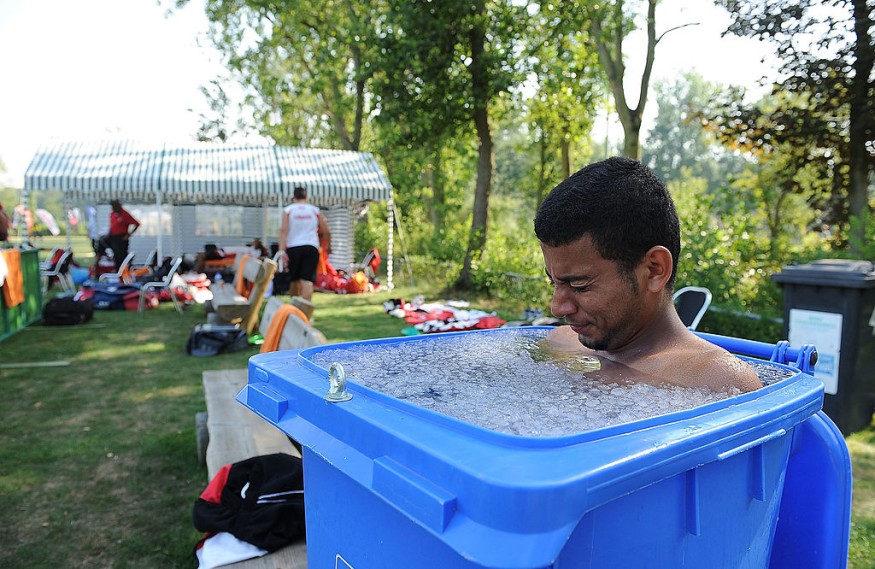After a tough workout or practice, many athletes find relief by immersing themselves in an ice bath to alleviate their soreness. Recently, cold plunging has become a trendy method of cold water therapy. Individuals are submerged in a pool or tub of frigid water up to their necks to help reduce inflammation and alleviate muscle soreness.
Despite being a well-known technique, cold plunging has gained popularity among influencers, celebrities, and athletes, who share their experiences with it. Experts discuss the process, effectiveness, and cold-plunging to know whether it is worth trying.

Mechanism Behind Cold Plunging
CNet reported that cold plunging and cryotherapy are both forms of cold therapy but differ in their methods. Cryotherapy involves entering a chamber with liquid nitrogen vapor to achieve sub-zero temperatures of -200 to -300 degrees Fahrenheit. In contrast, cold plunging consists of immersing oneself in 59 degrees Fahrenheit or colder water, and individuals can stay in the tub for longer periods than in a cryo chamber.
Exercise physiologist Rachelle Reed suggests starting with a three- to five-minute plunge in the water below 50 degrees Fahrenheit and practicing box breathing to manage the experience for those new to cold plunging. Individuals accustomed to cold plunging can stay in the tub for 10 to 15 minutes.
Studies have found that cold plunging after a high-intensity workout can decrease muscle soreness and related biomarkers, according to Reed. A meta-analysis published in 2022 supports using cold water immersion as a recovery tool, as it can reduce muscle soreness, creatine kinase presence, and perceived recovery for up to 24 hours after exercise.
Furthermore, an article in the Ohio State University's online publication reports that exposure to cold temperatures during cold plunging can reduce metabolism, causing a decrease in sweating and breathing.
Additionally, cold water can help alleviate swelling, reduce tissue breakdown, and relocate lactic acid away from muscles. Once you exit the ice bath, your body and muscles begin to warm up, leading to increased circulation and muscle relaxation.
Benefits and Risks of Cold Plunging
Sports medicine physician Dominic King, DO, explains to Cleveland Clinic that ice baths can relieve sore muscles and offer physical, mental, and functional benefits, as long as individuals are in good health and do not have any underlying conditions, despite one study questioning its efficacy.
On the other hand, a 2021 study of college soccer players demonstrated that cold water immersion therapy promotes basic post-sport recovery, indicating that ice baths still have some use.
However, individuals with pre-existing conditions include cardiovascular disease, high blood pressure, diabetes, peripheral neuropathy, poor circulation, venous stasis, and cold agglutinin disease.
Dr. King advises consulting a doctor to determine any health condition before cold plunging and use it as a remedy for muscle pain, as ice baths are not recommended for serious injuries such as fractures, torn ligaments, or tendons that require immediate medical attention.
RELATED ARTICLE : TikTok Plunging Trend: Cold Water on Curing Depression, Enabling Focus
Check out more news and information on Medicine and Health in Science Times.
© 2025 ScienceTimes.com All rights reserved. Do not reproduce without permission. The window to the world of Science Times.












